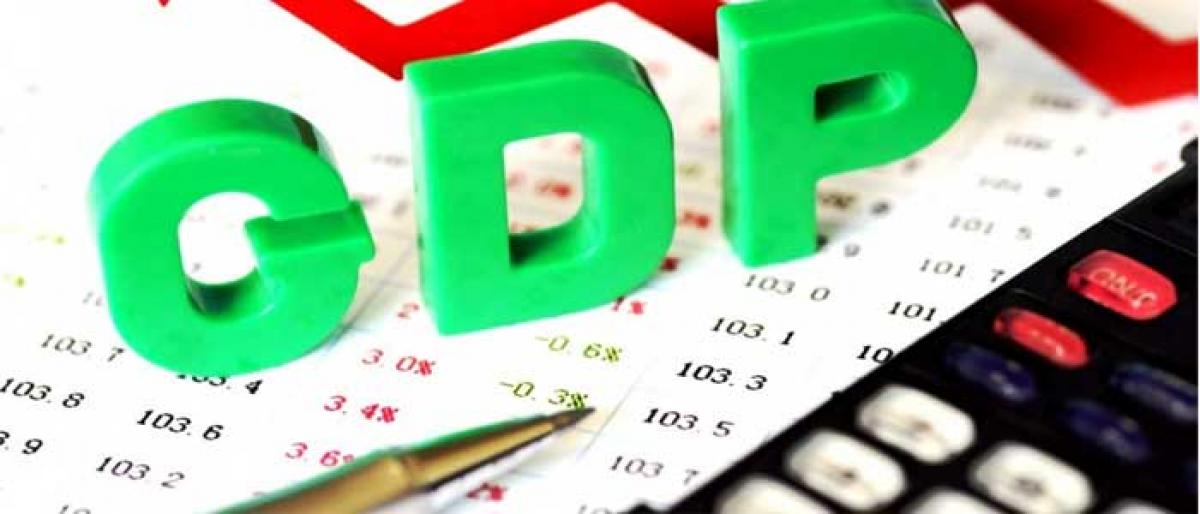Live
- Caste survey crosses ‘1 crore’ milestone
- Karnataka bypolls: NDA leads in two Assembly seats, Congress in one
- Accord tax exemption to ‘The Sabarmati Report’: Bandi Sanjay
- McGrath named captain as injured Healy ruled out of Australia’s ODI series against India
- Jharkhand: After see-saw battle, INDIA bloc takes big lead against NDA in early trends
- Konda Surekha directs officials to focus on eco-tourism devpt in a scientific manner
- Assam bypolls: BJP and its allies leading on all five seats
- Applicants squirm as 5 cams conk out at Uppal RTA office
- Flawless Execution: Driver Tenure Solution Achieves Two Years of Zero Production Incidents
- TGBIE extends scholarship deadline to Nov 30
Just In

If we go by the optimism in the air and the political rhetoric that pervades every walk of life these days, Indian economy should be in express lane, clocking double digit growth at minimum. But that is starkly untrue, as GDP numbers suggest. For the past 15 months, the economy has been on a bumpy road, losing steam quarter after quarter. The slowdown is across the board save for government spendi
If we go by the optimism in the air and the political rhetoric that pervades every walk of life these days, Indian economy should be in express lane, clocking double digit growth at minimum. But that is starkly untrue, as GDP numbers suggest. For the past 15 months, the economy has been on a bumpy road, losing steam quarter after quarter. The slowdown is across the board save for government spending. From private consumption, a key driver of India's growth, to industrial activity and services; from exports to construction sector, all key segments are on a downward curve, pushing GDP growth to a three-year low of 5.7 per cent in Q1FY18.
Of course, the downturn kicked in well before demonetisation, but it got sharper post the ill-advised move. Those in power and those who support them may not agree, but the after-effects still linger. To be frank, the current GDP numbers don't tell full story if we were to compare the economic growth under the Narendra Modi-led NDA government with that of its predecessor, the Congress-led UPA II, because the current dispensation changed base year from 2004-05 to 2011-12. If the calculation is done as per old base year, the current GDP numbers will be much bleaker than that the country witnessed during the scam-hit years of the UPA II crippled by policy paralysis.
This disappointing GDP data should be perplexing, to say the least. The growth started to stutter at a time when the country has most favourable environment to clock higher growth. Crude oil prices, which soared beyond $100/bbl during UPA II, are at historic lows now and there are no immediate signs that the prices will head north anytime soon.
This is a blessing for India which heavily depends on oil imports. Before the advent of the Modi regime, India used to allocate huge amounts towards oil subsidies. It's the other way around now. Oil companies are flush with profits as the Centre steadfastly refused to pass the benefits of low oil prices to consumers. Inflation is relatively low, interest rates are gradually coming down, rain gods have showered blessings and there is a stable central government with a single party securing clear majority after three decades. As if these are not enough, the Centre brought in a slew of reforms to spur the economy.
Despite such positives, the Indian economy is on a back foot! Why? The fault lies with the doctor, not the disease. It's high time the Mod government pushed itself from the rhetorical world to reality. Logistics constitute a significant part of production and operational costs. So, gradual reduction in petrol and diesel prices in tune with global prices will do a lot of good to all the sectors as operational costs will come down.
GST has dismantled tax borders across the country, bringing down logistics costs. Low oil prices will further ease the burden, spurring local consumption and turning Indian products more competitive overseas. Some say rupee should be depreciated to spur exports. But that's a bad idea. It's time Modi and his elite team realised that their way to retain power in 2019 lies in GDP numbers!

© 2024 Hyderabad Media House Limited/The Hans India. All rights reserved. Powered by hocalwire.com







